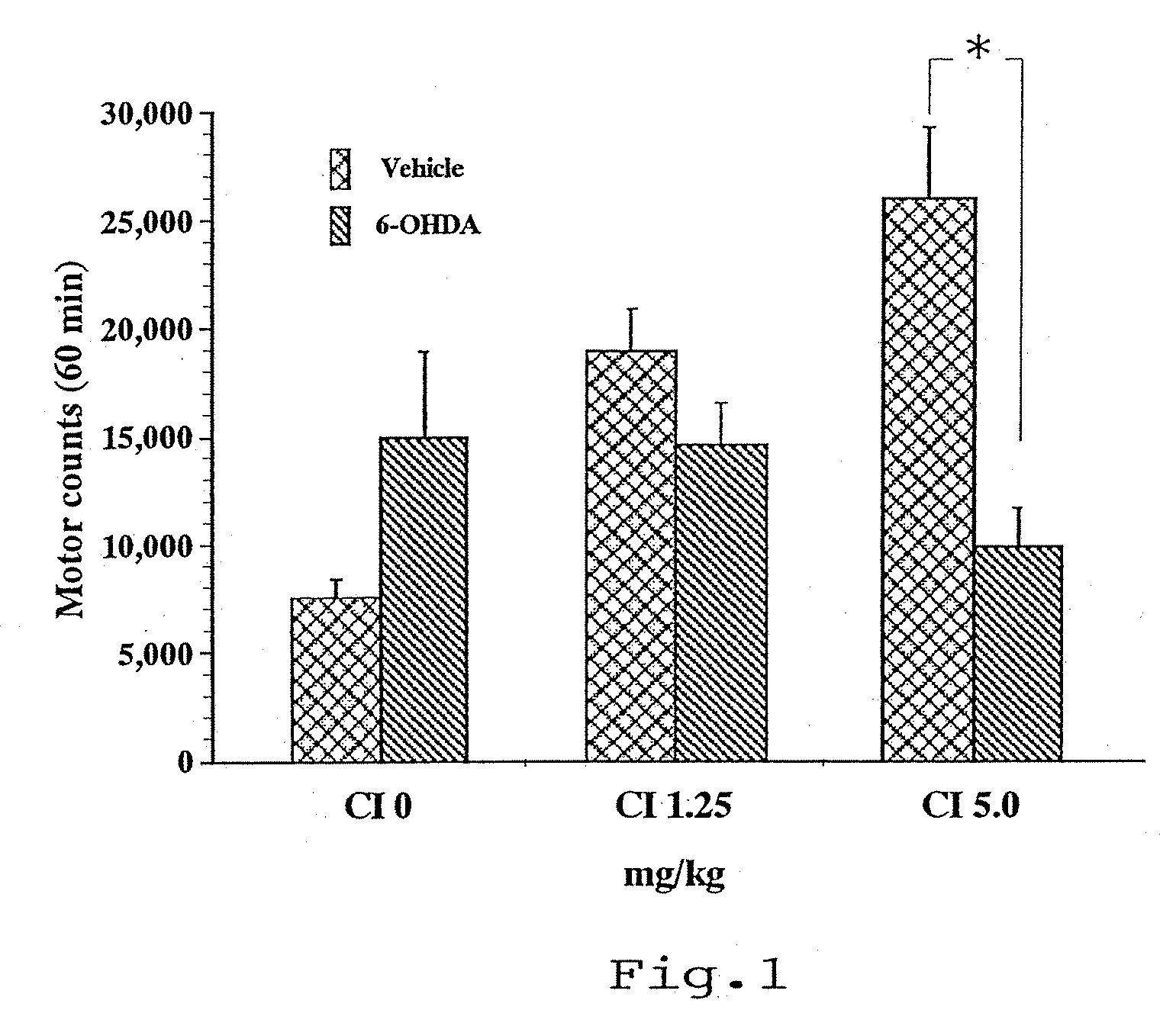Use of istradefylline for treating behavioral disorders
a technology of istradefylline and behavioral disorders, which is applied in the field of treating behavioral disorders, can solve the problems of long-term adverse effects of adhd on academic performance, vocational success, social-emotional development, and damage to the central nervous system, and achieve the effects of reducing the risk of cardiovascular disease, hypertension, and reducing the effect of adhd
- Summary
- Abstract
- Description
- Claims
- Application Information
AI Technical Summary
Benefits of technology
Problems solved by technology
Method used
Image
Examples
example 1
Tablets
[0071]Tablets having the following composition were prepared in a conventional manner.
[0072]Compound (I) (40 g) was mixed with 286.8 g of lactose and 60 g of potato starch, followed by addition of 120 g of a 10% aqueous solution of hydroxypropyl cellulose. The resultant mixture was kneaded, granulated, and then dried by a conventional method. The granules were refined to give granules used to make tablets. After mixing the granules with 1.2 g of magnesium stearate, the mixture was formed into tablets each containing 20 mg of the active ingredient by using a tablet maker (Model RT-15, Kikusui) having pestles of 8 mm diameter.
[0073]The prescription is shown in Table 3.
TABLE 3Compound (I)20mgLactose.143.4mgPotato Starch30mgHydroxypropyl Cellulose6mgMagnesium Stearate0.6mg200mg
example 2
Capsules
[0074]Capsules having the following composition were prepared in a conventional manner.
[0075]Compound (I) (200 g) was mixed with 995 g of Avicel and 5 g of magnesium stearate. The mixture was put in hard capsules No. 4 each having a capacity of 120 mg by using a capsule filler (Model LZ-64, Zanashi) to give capsules each containing 20 mg of the active ingredient.
[0076]The prescription is shown in Table 4.
TABLE 4Compound (I)20mgAvicel99.5mgMagnesium Stearate0.5mg120mg
example 3
Injections
[0077]Injections having the following composition were prepared in a conventional manner.
[0078]Compound (I) (1 g) was dissolved in 100 g of purified soybean oil, followed by addition of 12 g of purified egg yolk lecithin and 25 g of glycerin for injection. The resultant mixture was made up to 1,000 ml with distilled water for injection, thoroughly mixed, and emulsified by a conventional method. The resultant dispersion was subjected to aseptic filtration by using 0.2 μm disposable membrane filters, and then aseptically put into glass vials in 2 ml portions to give injections containing 2 mg of the active ingredient per vial.
[0079]The prescription is shown in Table 5.
TABLE 5Compound (I)2mgPurified Soybean Oil200mgPurified Egg Yolk Lecithin24mgGlycerine for Injection50mgDistilled Water for Injection1.72ml2.00ml
PUM
| Property | Measurement | Unit |
|---|---|---|
| diameter | aaaaa | aaaaa |
| concentration | aaaaa | aaaaa |
| size | aaaaa | aaaaa |
Abstract
Description
Claims
Application Information
 Login to View More
Login to View More - R&D
- Intellectual Property
- Life Sciences
- Materials
- Tech Scout
- Unparalleled Data Quality
- Higher Quality Content
- 60% Fewer Hallucinations
Browse by: Latest US Patents, China's latest patents, Technical Efficacy Thesaurus, Application Domain, Technology Topic, Popular Technical Reports.
© 2025 PatSnap. All rights reserved.Legal|Privacy policy|Modern Slavery Act Transparency Statement|Sitemap|About US| Contact US: help@patsnap.com

